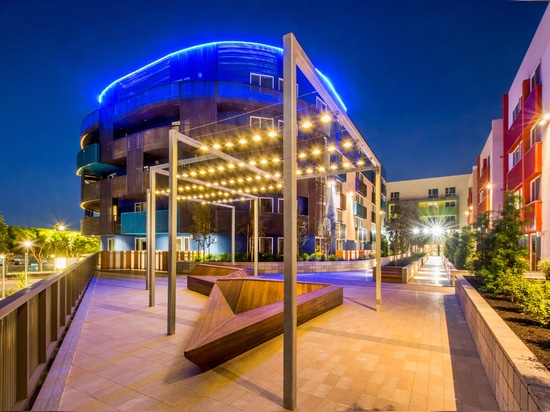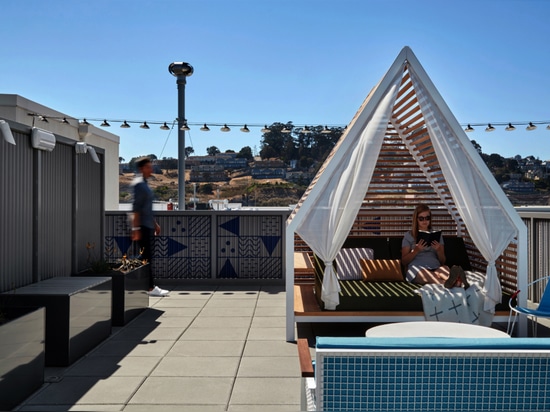
#PUBLIC ARCHITECTURE PROJECTS
The Dogpatch Ropewalk
The Dogpatch Ropewalk is a series of engaging community spaces, a green infrastructure, and a celebration of maritime history.
Sentence Description
The Dogpatch Ropewalk is an engaging public passageway that functions at a large scale green infrastructure as well as an outdoor museum to the site’s industrial maritime history.
There are many layers of contemporary history that one can experience in the Dogpatch, but few sites encapsulate this multiplicity like the intersection of Third and 23rd Streets. Here, the uncharacteristic angle of historic homes hint at the site’s heritage, the location of the Tubbs Cordage Company Ropewalk, whose slanted pier once pierced the traditionally gridded fabric of the neighborhood, extending more than one-thousand feet into the Bay, and connecting the ropemaking factory with its maritime customers. The factory operated from 1856 to 1963 but was leveled in the late 70’s to accommodate Muni’s “John M. Woods Motor Coach Center,” part of a community transition away from maritime industry. Today, no remnants of the building exist. The few warehouses and factories that remain throughout the community are quickly being lost to gentrification, as San Francisco seeks to meet the City’s housing shortage. As a tribute to this important chapter of Dogpatch industrial heritage, the Dogpatch Ropewalk was designed to evoke the aura of the historic pier and to use the landscape to tell the story of maritime industry in the Dogpatch community.
In the initial phases of the design process, research showed that the original shoreline of the bay fell halfway through the existing site; this fascinating discovery inspired the cardinal elements of the Midblock Passage design. The throughway is accordingly divided in three zones (Water, Marsh, Shore) all of which exhibit distinct program, paving, planting and atmospheric qualities.
The ‘water’ plaza is closest to the neighborhood’s arterial roadway, Third Street, and is the most abstract and ethereal of the three zones. Here, ghosts of the past inspire the unusual form of a family of Nomads, a collection of sculptural steel benches, designed by Fletcher Studio and fabricated by Chambers Art & Design in Oakland. Adjacent to these benches, an interactive art installation - the ‘Rope-Tying Station’ - encourages passerbys to engage first hand with the heritage of the site.
The ‘marsh’ zone draws visitors from the activity of the ‘water’ plaza through the site to the more contemplative ‘shore’ plaza. In the ‘marsh’ zone, the main feature is an elevated wood and steel boardwalk that harkens back to the original Tubbs Cordage pier. The boardwalk is suspended over thick planting that is designed to collect and retain rainwater, suggesting the marsh that originally covered this part of the shoreline. The ‘marsh’ also functions as a bioretention area, collecting the rainwater for the entire site and using the planting to filter pollutants and slow the water’s release into the sewer system.
The ‘shore’ zone is the most concrete in its significance and symbolism, utilizing above-grade transformers as a surface for historic image collages and original imagery of the Tubbs Cordage Factory and Ropewalk. This permanent public exhibition surrounds a public plaza with seating and a massive corten steel community table designed by Fletcher Studio to evoke the pier that used to jut into the Bay.
This remarkable space was made possible by the collaboration between the designers at Fletcher Studio, the developer Avant Housing and contractor Devcon Construction Incorporated, with the invaluable historical insight provided by The Potrero Hill Archives Project, Peter Linenthal, Steven Fidel Herraiz and Glenn Lym.



